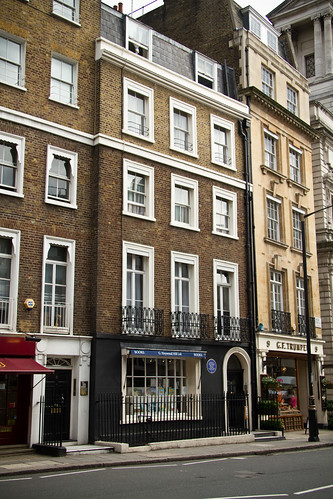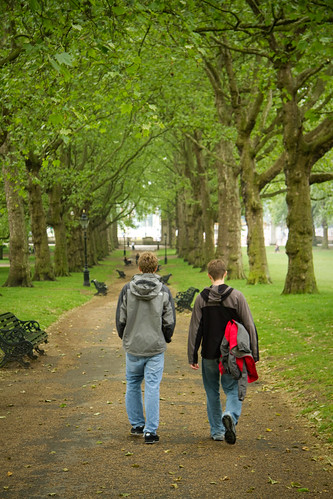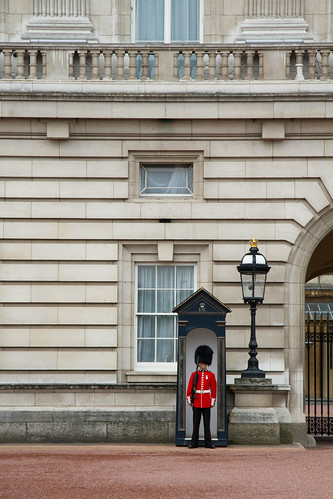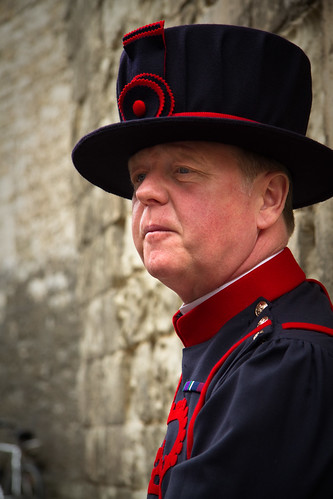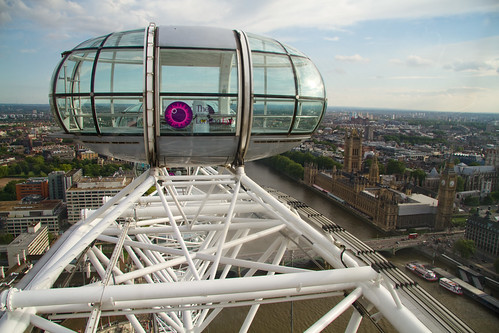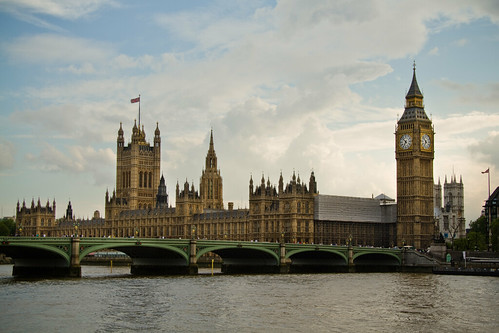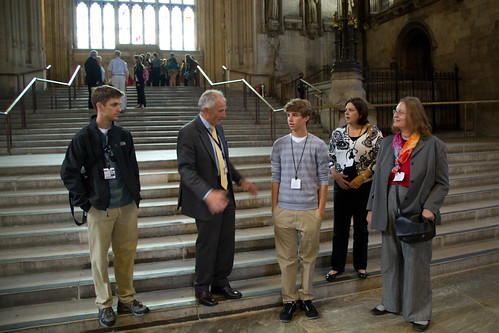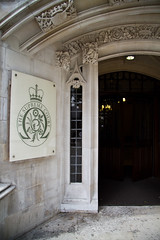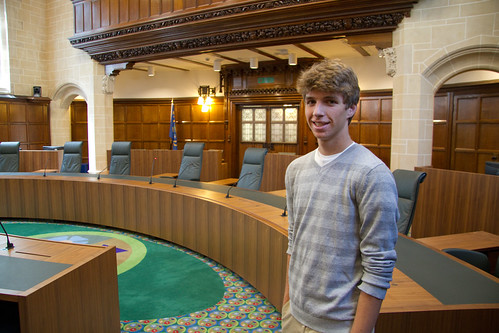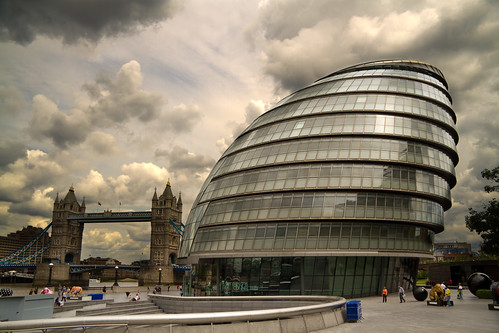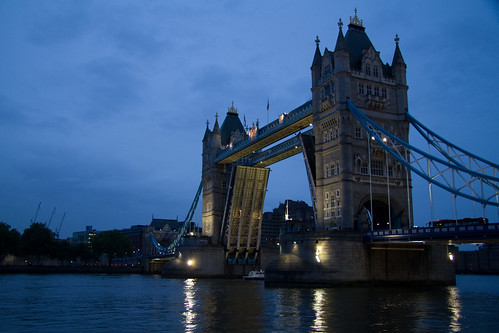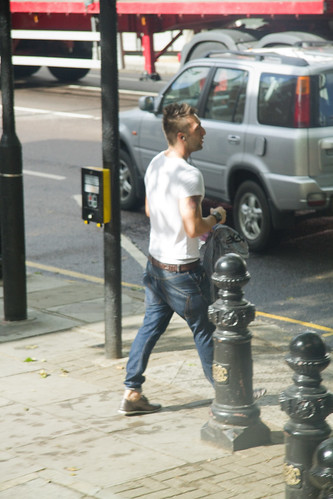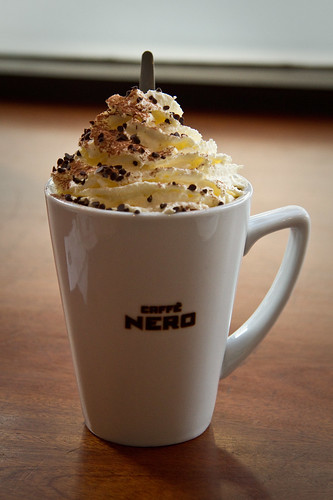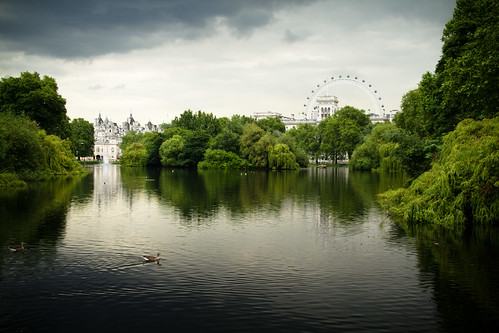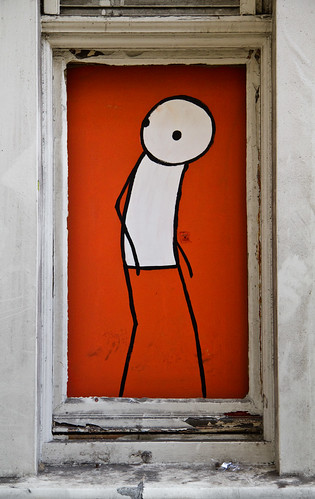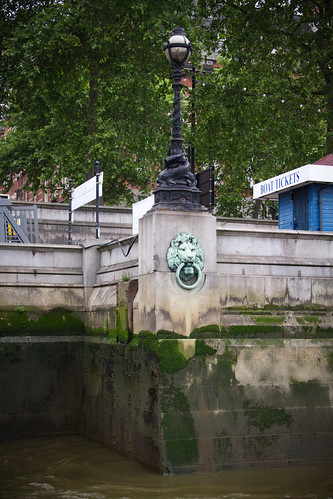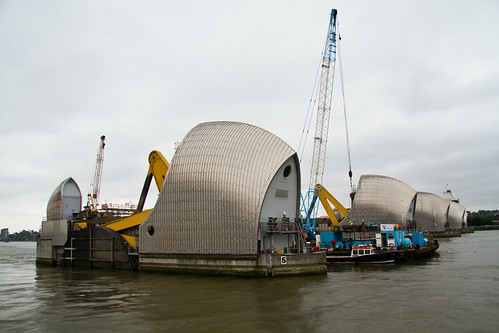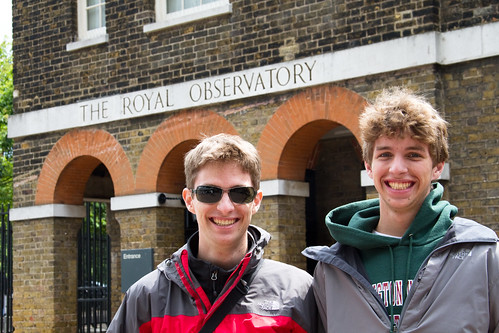Day 1: Instead of napping we decided to use the ‘force your body to time shift’ approach to jet lag – after checking into our apartment we went to breakfast and started sightseeing.
Our apartment is on Curzon Street in Mayfair – it’s small, but nice and very convenient to the tube; it’s also across the street from Shepherd Market, a small area with shops and restaurants. The spot we chose for breakfast was okay, but we’re not really used to runny eggs and English style bacon and hash browns. Tomorrow we’ll try eating in, though we also found some nice pastry cafes right across the street.
Burning off the bacon, we walked through Green Park and past Buckingham Palace, then jumped the “Original Tour” double decker bus to get situated and oriented to the city, disembarking for the Tower of London, then rejoining for the rest of the loop afterwards.
The tour of the Tower of London was quite entertaining – they are hosted by Yomen of the Guard who live within the walls. We learned about many beheadings, mucky moats, how to become a Beefeater, and nuances of armor.
After the rest of the bus tour, including three loops through Trafalgar Square (where pigeons have been eradicated by fining humans for feeding them and sicking hawks on the birds that choose to stick around anyway), we returned home for a nap.
Late that afternoon a quick two stop ride in the tube took us back to the Thames for a ride on the London Eye. Even after 23 years of marriage I wasn’t aware of the depth of Sarah’s discomfort with heights until I asked her to take my picture near the top of the loop. Oops.
We had a very nice meal at an Italian restaurant near the Eye, then hopped the tube for home. Time to finally get caught up on some of that sleep!

